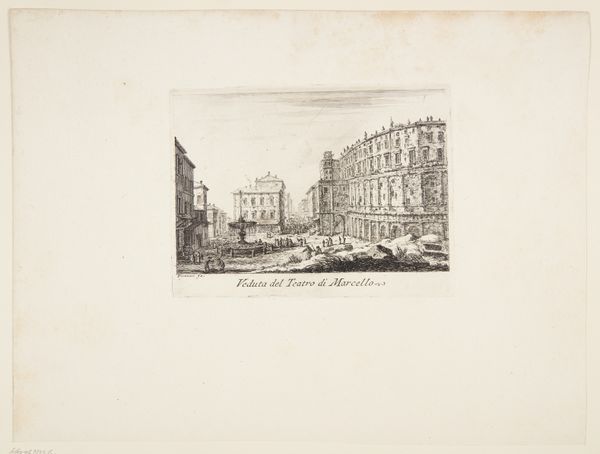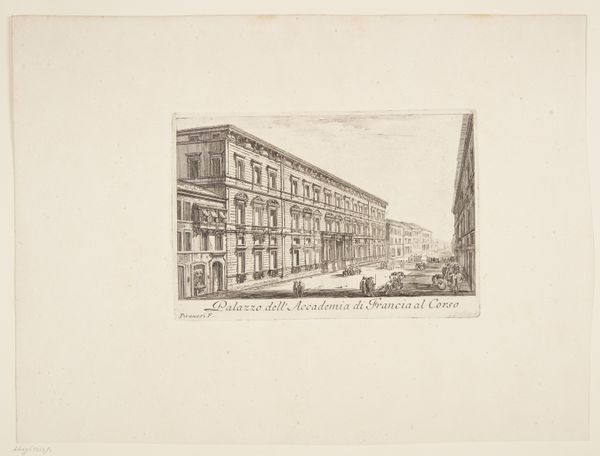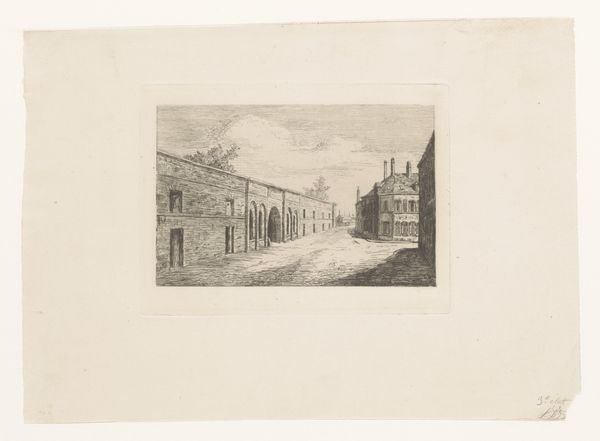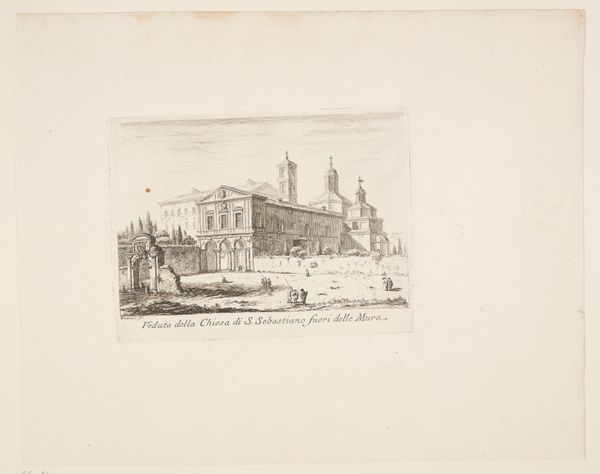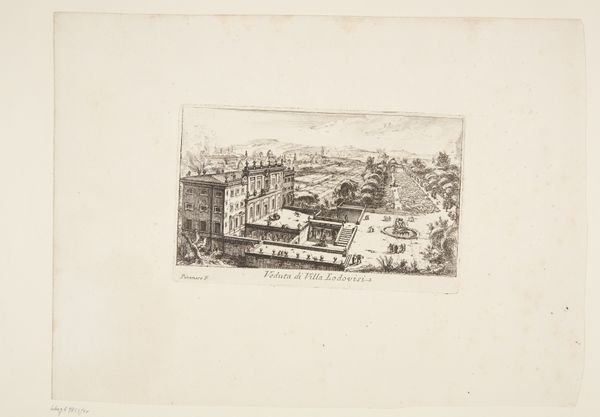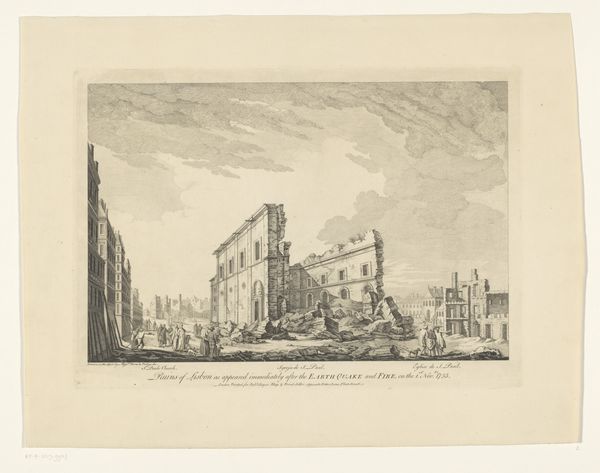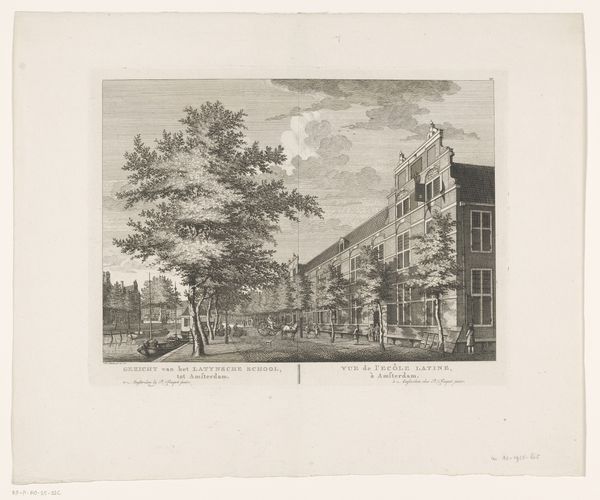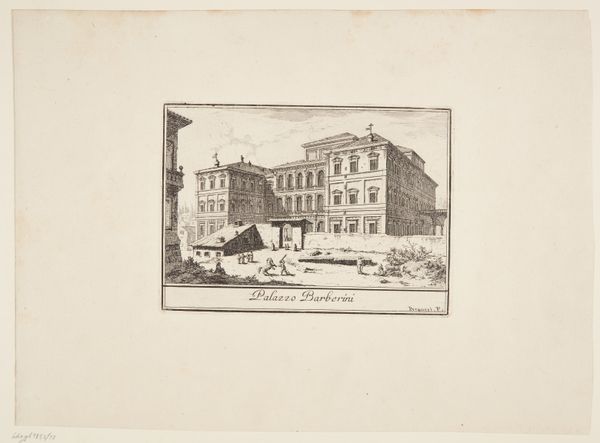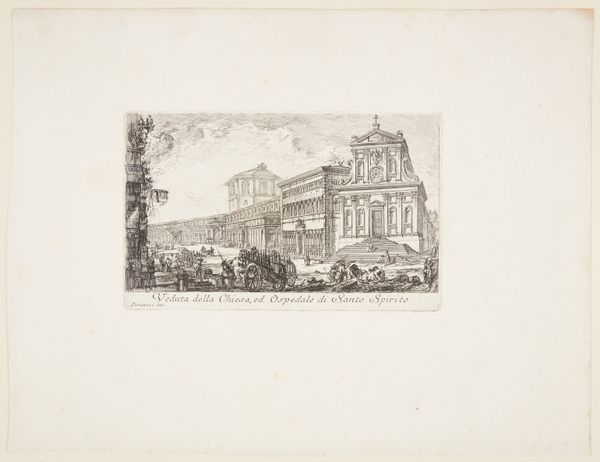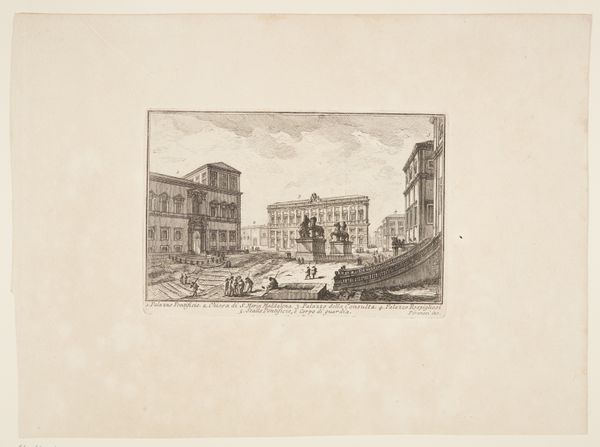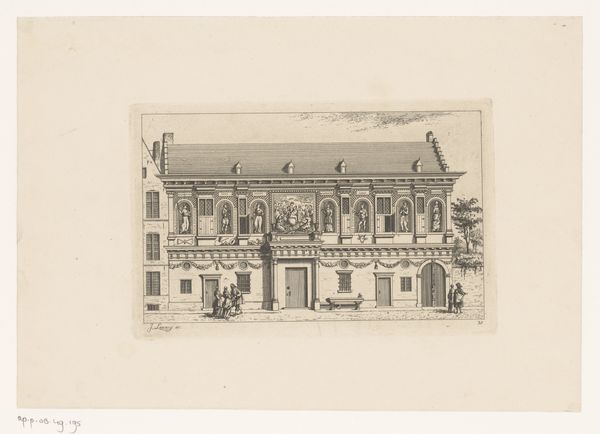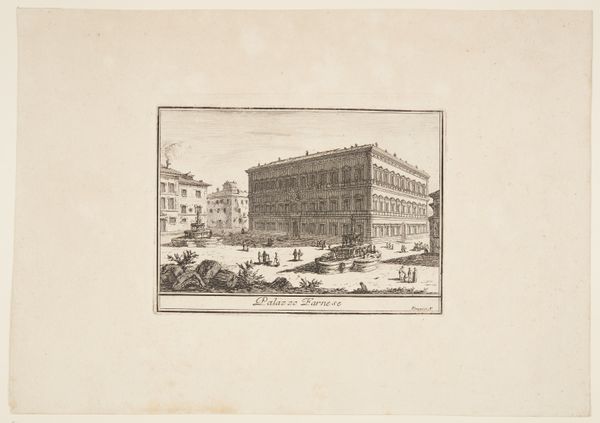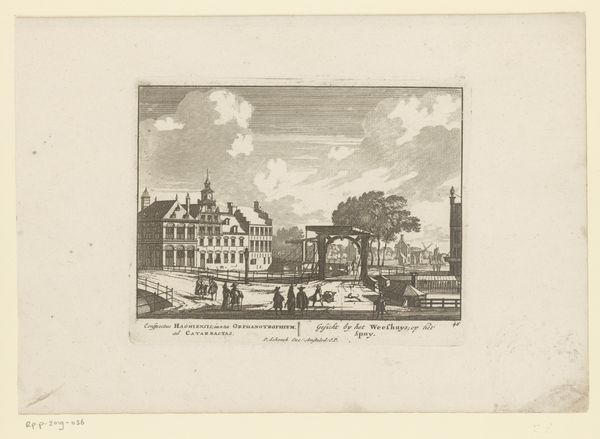
The small church of S. Carlo at the Four Fountains. 1. Palazzo Albani 1741 - 1748
0:00
0:00
print, etching, engraving, architecture
#
baroque
# print
#
etching
#
etching
#
cityscape
#
engraving
#
architecture
Dimensions: 114 mm (height) x 183 mm (width) (plademaal)
Editor: This is Giovanni Battista Piranesi’s "The small church of S. Carlo at the Four Fountains. 1. Palazzo Albani," an etching and engraving from the 1740s. It feels very precise and architectural. What are your initial thoughts on it? Curator: The first thing that strikes me is the labour involved. The etching and engraving process itself demanded skill, time, and resources. Consider the cultural and economic systems that enabled Piranesi to dedicate himself to such a detailed rendering. How does the print medium democratize access to such grand architecture? Editor: That's a great point. It makes me think about how prints made these buildings accessible beyond Rome. How do you think the material informs the content in this case? Curator: Absolutely. Printmaking as a reproductive technology meant images could circulate, influencing architectural trends and shaping perceptions of Roman grandeur. We’re seeing not just a building, but a constructed image designed for consumption. Think about the distribution networks, the market for such images among Grand Tourists, the workshops, the labor required in each print produced… each impression, even, involved its own unique creation, depending on factors of time and the printing process itself. Editor: So, you're saying the choice of printmaking wasn't just practical, but deeply tied to how the art was consumed and its impact on architectural discourse? Curator: Precisely. By examining the material conditions of production, we reveal how art both reflects and shapes its world. Every stage in the printmaking process– the selection of paper, the biting of the plate, the inking and wiping– shapes the final result. We have to remember how art creation happens within real social and economic relationships. Editor: I see the picture so differently now! I was initially just thinking about Baroque style and artistry, but you've really highlighted the importance of the materials and their implications. Thanks! Curator: Exactly! It's like material is a tool of communicating an argument and telling a story of economy and access to cultural prestige.
Comments
No comments
Be the first to comment and join the conversation on the ultimate creative platform.
